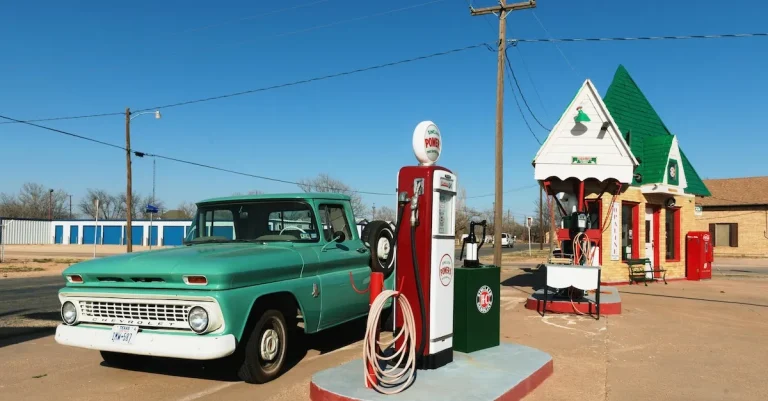Proposed Aqueduct From Mississippi River To Colorado River
As the American West faces increasing droughts and water shortages, bold infrastructure ideas have been proposed to transport water from more abundant regions. One such proposal is building an aqueduct to divert water from the Mississippi River system to replenish the depleted Colorado River. In this comprehensive article, we’ll analyze the feasibility, engineering challenges, costs, benefits, and debates around constructing this massive water diversion project.
If you’re short on time, here’s a quick answer: While diverting Mississippi River water could provide needed relief to the over-drawn Colorado River, huge engineering obstacles, massive costs, and opposition make this aqueduct proposal extremely difficult to implement.
In the sections below, we’ll evaluate the Mississippi-Colorado aqueduct concept in-depth, including the proposed route and flow volumes, engineering and construction difficulties, project costs, ecological impacts, benefits for southwestern states, and arguments for and against the idea.
Proposed Route and Water Volumes
The proposed aqueduct from the Mississippi River to the Colorado River is an ambitious project that aims to address water scarcity issues in the southwestern United States. The idea is to transport water from the abundant Mississippi River to the arid Colorado River basin, providing a much-needed solution to the water demands of states like Arizona, Nevada, and California.
Route
The proposed route for the aqueduct involves a vast network of pipelines and canals that would span thousands of miles. It would start from the Mississippi River near its confluence with the Ohio River, and then traverse through several states, including Missouri, Kansas, Oklahoma, Texas, New Mexico, and finally reaching the Colorado River basin in Arizona.
This route has been carefully chosen to minimize the environmental impact and ensure water delivery efficiency. It takes into consideration factors such as topography, existing infrastructure, and land use.
The aqueduct would pass through both rural and urban areas, requiring coordination and collaboration with various stakeholders along the way.
Water Volumes
The proposed aqueduct would have the capacity to transport a significant volume of water from the Mississippi River to the Colorado River. The exact amount of water that would be transferred is still being studied and would depend on various factors, including water availability, demand projections, and environmental considerations.
One of the challenges in determining the water volumes is the need to balance the demands of both the source and recipient regions. While the Mississippi River basin has abundant water resources, the Colorado River basin is facing water scarcity issues.
The aqueduct project aims to bridge this gap and ensure a sustainable water supply for all regions involved.
It is important to note that the proposed aqueduct is still in the planning stage, and feasibility studies are being conducted to assess the potential benefits and challenges. The project would require significant investments in infrastructure, engineering expertise, and environmental mitigation measures.
For more information on water management and infrastructure projects, you can visit https://www.epa.gov/waterinfrastructure and https://www.usbr.gov/.
Engineering and Construction Challenges
Building an aqueduct from the Mississippi River to the Colorado River is a massive engineering undertaking that presents several challenges. These challenges range from technical difficulties to environmental concerns.
Let’s explore some of the major challenges that engineers would face during the construction of such a project.
1. Distance and Terrain:
The distance between the Mississippi River and the Colorado River is approximately 1,200 miles. Constructing an aqueduct of this length would require extensive planning and construction expertise. The terrain along the route may vary, including mountains, valleys, and various types of soil.
Engineers would need to carefully study the terrain to determine the most suitable route and design for the aqueduct.
2. Water Flow and Pressure:
Transporting water over such a long distance requires maintaining a consistent flow and pressure throughout the aqueduct. The Mississippi River, known for its high flow rate, would need to be harnessed efficiently, while ensuring that the water pressure is maintained without causing damage to the aqueduct structure.
Advanced hydraulic engineering techniques would be required to achieve this.
3. Environmental Impact:
Constructing an aqueduct of this magnitude would have a significant impact on the surrounding environment. Environmental studies would need to be conducted to assess the potential effects on wildlife habitats, ecosystems, and water quality.
Measures would need to be implemented to minimize any negative impact and ensure sustainability.
4. Cost and Funding:
Building an aqueduct of this scale would require substantial financial resources. The cost of land acquisition, engineering design, construction materials, and labor would be significant. Securing funding for such a project would be a major challenge, and governments or private investors would need to be convinced of the long-term benefits and feasibility.
5. Maintenance and Operation:
Once the aqueduct is constructed, it would require regular maintenance and operation to ensure its efficiency and longevity. The vast length of the aqueduct would make maintenance tasks more challenging and costly.
Engineers would need to develop effective maintenance plans and systems to monitor and repair any potential issues promptly.
Project Cost Estimates
Building an aqueduct from the Mississippi River to the Colorado River is a massive undertaking that requires careful planning and consideration of various factors. One of the most crucial aspects of any infrastructure project is estimating the cost involved.
Here are some key factors that contribute to the overall cost of the proposed aqueduct:
1. Distance and terrain:
The length of the aqueduct and the type of terrain it needs to traverse play a significant role in determining the cost. The longer the distance, the more materials and labor will be required. Additionally, if the route encounters challenging terrain, such as mountains or valleys, it may require additional engineering and construction efforts.
2. Material and labor costs:
The materials used for the construction of the aqueduct, such as concrete, steel, and pipes, can significantly impact the overall cost. The availability and cost of these materials in the project area need to be taken into account.
Similarly, labor costs, including wages and benefits for construction workers, will also contribute to the total expenses.
3. Environmental considerations:
Environmental factors, such as wildlife protection, conservation of natural resources, and compliance with environmental regulations, can add to the project’s cost. Implementing measures to mitigate potential negative impacts on ecosystems and habitats may require additional funding.
4. Engineering and design:
The aqueduct’s engineering and design phase involves extensive planning, feasibility studies, and detailed technical specifications. Hiring experienced engineers and design consultants, conducting environmental impact assessments, and obtaining necessary permits can be costly but essential to ensure the project’s success.
5. Maintenance and operation:
Once the aqueduct is built, ongoing maintenance and operation costs need to be factored in. Regular inspections, repairs, and upkeep activities are necessary to ensure the aqueduct’s longevity and functionality.
These costs should be considered over the project’s lifespan to accurately estimate the overall expenses.
It is important to note that accurately estimating the cost of such a massive infrastructure project is a complex task and can vary depending on several factors. Detailed analysis, feasibility studies, and consultation with experts are crucial to arrive at realistic cost estimates.
For more information on infrastructure projects and their costs, you can visit reputable websites such as:
- American Society of Civil Engineers – Infrastructure Report Card
- Construction Dive
- Engineering News-Record
Environmental Impacts
The proposed construction of an aqueduct from the Mississippi River to the Colorado River would have significant environmental impacts. It is important to consider the potential consequences that such a project could have on the surrounding ecosystem.
1. Disruption of Aquatic Ecosystems
Building an aqueduct of this magnitude would involve altering the natural flow of water in both rivers. This disruption could have serious consequences for the aquatic ecosystems that rely on the existing flow patterns.
Species that have adapted to specific water conditions may struggle to survive in the altered environment.
The Mississippi River is home to a diverse range of aquatic life, including fish, mussels, and other invertebrates. Similarly, the Colorado River supports numerous species, such as the endangered humpback chub and razorback sucker.
Any changes to the rivers’ flow could disrupt their habitats and potentially lead to population declines or even extinctions.
2. Water Quality Concerns
Another potential environmental impact of the aqueduct project is the potential for water quality degradation. The Mississippi River is known to carry a significant amount of sediment and pollutants, including agricultural runoff and industrial waste.
If water from the Mississippi River is diverted to the Colorado River, it could introduce these contaminants into a previously pristine ecosystem.
The introduction of pollutants could have detrimental effects on the aquatic life in the Colorado River. It could also impact downstream users who rely on the river for drinking water or irrigation purposes.
Proper filtration and treatment measures would need to be put in place to mitigate these risks.
3. Impact on Wildlife and Biodiversity
The construction of an aqueduct would likely require the clearing of land and the removal of vegetation. This could result in the loss of habitat for various wildlife species, including birds, mammals, and reptiles.
Disruption of their natural habitats could lead to a decline in populations and a loss of biodiversity in the affected areas.
Additionally, the noise and disturbance associated with construction activities may further disrupt wildlife, potentially leading to behavioral changes and stress. Efforts would need to be made to minimize these impacts and mitigate any negative effects on the local wildlife populations.
4. Potential for Water Scarcity
While the aqueduct project aims to address water scarcity in the Colorado River basin, it is important to consider the long-term sustainability of such a solution. Climate change and population growth are already putting strain on water resources in the region, and diverting water from one river to another could exacerbate existing water scarcity issues.
It is crucial to carefully evaluate the water demands of both the Mississippi and Colorado River basins and ensure that the proposed aqueduct project does not lead to further depletion or unsustainable water use.
Benefits for the Colorado River Basin
The proposed aqueduct from the Mississippi River to the Colorado River has the potential to bring numerous benefits to the Colorado River Basin. Here are some of the key advantages:
1. Increased water supply
The Colorado River Basin is facing significant water challenges, with increasing demand and decreasing supply. The aqueduct project could help alleviate this issue by providing an additional water source from the Mississippi River.
This would ensure a more reliable and sustainable water supply for the region, supporting agriculture, industry, and domestic use.
2. Drought mitigation
The Colorado River Basin has experienced severe drought conditions in recent years, impacting ecosystems, agriculture, and communities. The proposed aqueduct could help mitigate the effects of drought by supplementing the Colorado River’s water levels during dry periods.
This would help maintain water availability for critical needs, including drinking water and irrigation.
3. Environmental benefits
The aqueduct project could have positive environmental impacts on the Colorado River Basin. By diverting water from the Mississippi River, it could reduce the pressure on the Colorado River’s ecosystems, which are currently strained due to overuse.
This would help protect and restore important habitats, supporting wildlife and enhancing biodiversity in the region.
4. Economic opportunities
The aqueduct project would also bring significant economic benefits to the Colorado River Basin. The construction of the aqueduct would create jobs and stimulate economic growth in both the construction and operation phases.
Additionally, a more reliable water supply would support agricultural production, which is a vital sector in the region’s economy.
5. Water quality improvement
The Mississippi River is known for its high water quality, while the Colorado River often faces challenges in maintaining water quality due to pollution and other factors. The proposed aqueduct could help improve water quality in the Colorado River Basin by blending the cleaner water from the Mississippi River with the existing water supply.
This would have positive implications for both human consumption and ecosystem health.
Arguments For and Against
Arguments For the Proposed Aqueduct
The proponents of the proposed aqueduct from the Mississippi River to the Colorado River argue that it would help address the water shortage crisis in the western United States. With the increasing population and the impacts of climate change, water scarcity is becoming a pressing issue.
The aqueduct would provide a reliable and sustainable water source to meet the needs of the growing population and support agricultural, industrial, and domestic water demands.
Furthermore, the aqueduct could also have potential economic benefits. It could create new job opportunities during the construction phase and stimulate economic growth in the regions it passes through.
Additionally, the increased availability of water could attract new businesses and industries to the area, further boosting the local economies.
Supporters of the aqueduct also argue that it could help mitigate the risks of drought and reduce the dependency on existing water sources, such as groundwater reserves and reservoirs. By diversifying the water supply, the aqueduct would provide a more resilient system that can withstand the impacts of climate change and ensure water security for future generations.
Arguments Against the Proposed Aqueduct
However, there are also valid concerns and arguments against the construction of the aqueduct. One of the main concerns is the potential environmental impact it could have on the Mississippi River and the surrounding ecosystems.
Building a massive infrastructure project like this could disrupt natural habitats, impact wildlife populations, and alter the flow dynamics of the river.
Another argument against the aqueduct is the high cost associated with its construction and maintenance. Estimates suggest that the project could cost billions of dollars, and there are concerns about the financial feasibility and affordability of such a massive undertaking.
Critics argue that these funds could be better utilized for investing in sustainable water management practices, conservation efforts, and developing alternative sources of water.
Moreover, opponents of the aqueduct raise concerns about the potential inequitable distribution of water resources. They argue that diverting water from one region to another could lead to water scarcity and conflicts between different states or regions.
It is essential to consider the social and environmental justice implications of the aqueduct and ensure that the benefits and burdens are distributed fairly.
Ultimately, the decision whether to proceed with the proposed aqueduct requires careful consideration of all these arguments, weighing the potential benefits against the potential drawbacks. It is crucial to conduct thorough environmental impact assessments, engage in public consultations, and explore alternative solutions to address the water scarcity issue in the western United States.
Conclusion
In summary, while diverting surplus Mississippi River water could help alleviate strains on the overdrawn Colorado River, the aqueduct concept faces immense financial, engineering, ecological, and political challenges. Still, some experts argue an inter-basin water transfer is necessary to sustain the American Southwest. Whether such a bold plan could become reality remains debatable, but shows the innovative thinking around western water issues.








